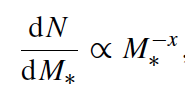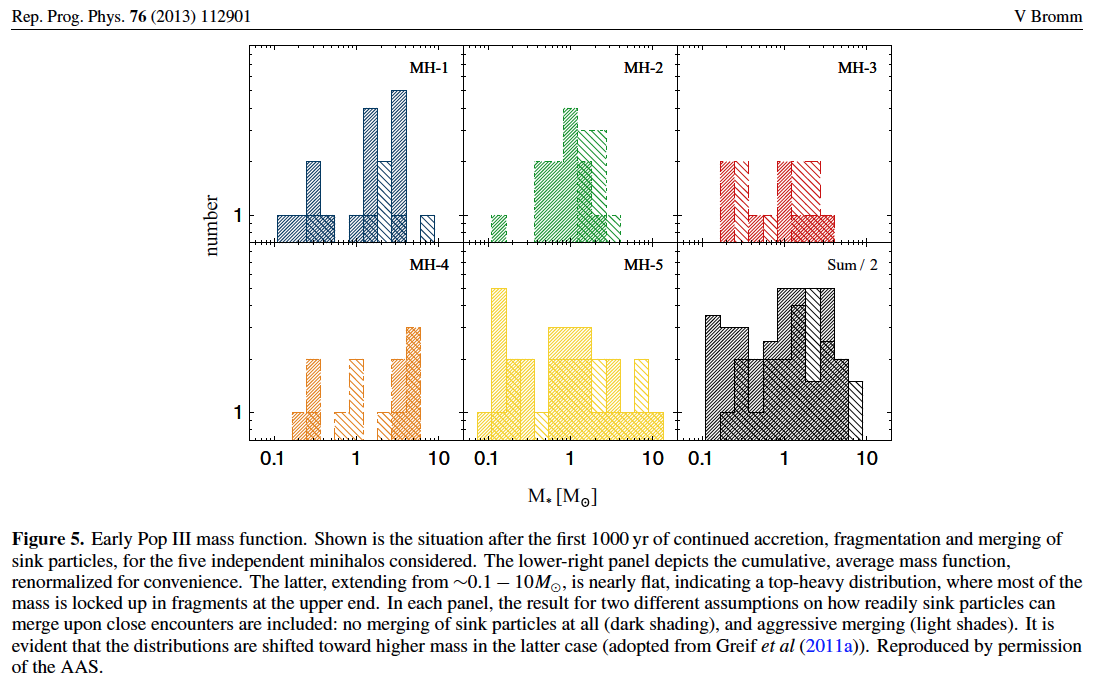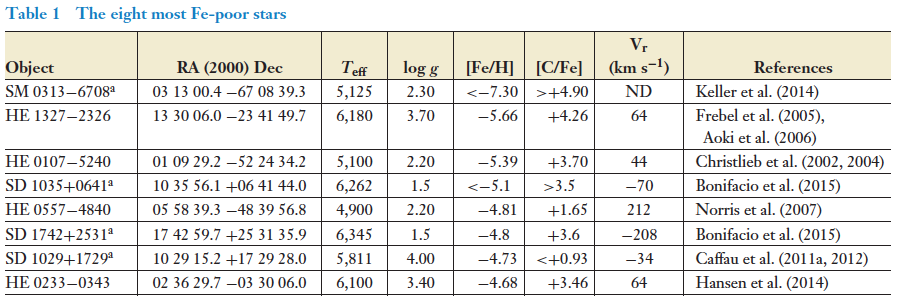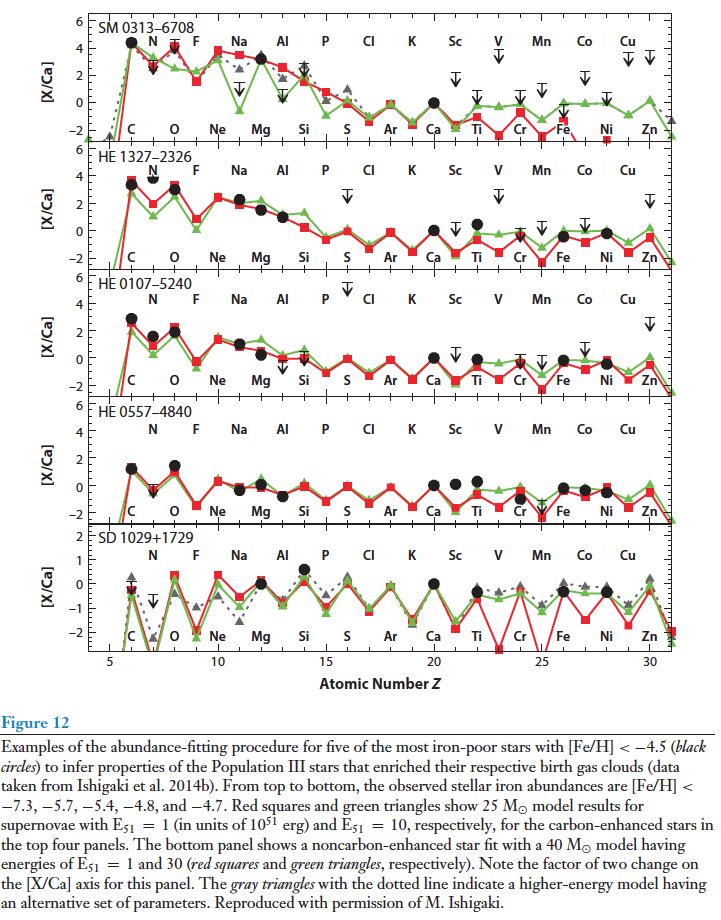The First Stars
What would the first stars (referred to as "Population III stars") look like? How would you find them?
Star formation today:
- Interstellar gas clouds cool by line emission from metals and molecules.
- Stars form in cold, dense, dusty cores of dense molecular clouds.
- Competition between thermal pressure and gravitational collapse controls onset of star formation.
- As clouds collapse, they can fragment into smaller units, forming individual stars.
- Jeans mass scales as
How would the conditions be different in the early universe?
- No metals to cool things, atomic gas very inefficient at cooling below 104 K. We need H2 molecules to cool things.
- Low metallicity means no dust to act as sites of molecule formation. Molecular formation is inefficient, relying on free electron interactions instead:
- H + e- --> H- + photon
- H- + H --> H2 + e-
We have seen that for gas to cool and form stars we need tcool < tdyn. If we work through the calculations, we need a minimum halo mass of ~ 106 Msun at z~20 to start the collapse. At this point in the universe's history the molecular fraction is estimated to be on the order ~ 10-4.
At these redshifts, these halos represent extremely rare peaks in the density field.
Question: why couldn't things have happened at even higher redshift in the even more rare peaks?
The Initial Mass Function (IMF) of Pop III stars
First, intuitive/rough considerations:
1) Zero metallicity, lack of molecules: Jeans mass will be higher, typical stellar mass higher(?)
2) What constraints to we have on the lower mass limits of Pop III stars?
Consider the IMF in present day star-formation, often characterized by the Salpeter (1955) form:
where x ~ 2.35.
From this we can calculate the average stellar mass:
So for a Salpeter mass function with x=2.35 and lower limit 0.1 Msun, we have a typical stellar mass of 0.4 Msun.
This alone argues that the IMF of Pop III stars is different from current star formation, or else we'd see low mass Pop III stars.
Early simulations of Pop III star formation (from Bromm 2013, citing Greif 2011):
Tentative suggestion that the IMF is flatter (x ~ 0) with typical masses more like 10s of Msun. "Top heavy IMF".
Observations: the search for zero/low metallicity stars
Two questions:
The most metal-poor stars (from Norris and Frebel 2015):
The most metal-poor stars tend to have non-solar abundance ratios.
- Very low metallicity: second-generation stars?
- Non-solar abundances: suggestive of pollution by a single supernova?
(from Norris and Frebel 2015):






